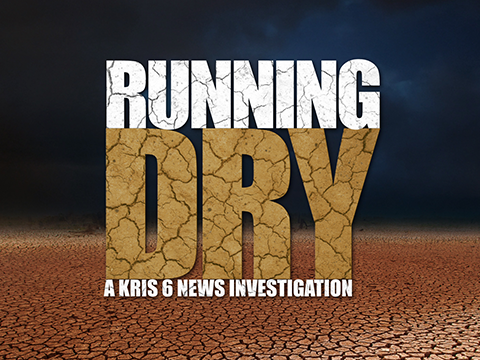HOUSTON, Texas — During droughts in the 1980s and 90s, Corpus Christi had access to 45 percent less water than the city does now because it had two fewer water sources.
In the mid 1990s, as the water levels at Lake Corpus Christi and the Choke Canyon reservoir dipped to 25 percent of their capacities, city leaders knew something had to be done.
“There were a number of options that were looked at in those early days,” said former Port of Corpus Christi Director of Engineering Services Frank Brogan.
Brogan, who says the port “loaned” him to the city during that time period, says the situation was quite serious.
“Everyone was concerned we would soon run out of water if something wasn’t done just as fast as humanly possible,” he said.
The solution: bring in water from Lake Texana, and the Colorado River, via a pipeline named after former Corpus Christi Mayor Mary Rhodes, who died in 1997 — one year before the first phase of the project was complete.
That 101-mile-long section of pipeline allowed Lake Texana water to flow all the way from its location east of Victoria to the O.N. Stevens Water Treatment Plant in Corpus Christi.
After two years of construction, a second 42-mile-long pipeline would transport water from the Colorado River — located near Bay City — into the system in 2016.
Now, The Mary Rhodes Pipeline brings in an average of 45 million gallons of water per day for people to drink, and industries to use, in Corpus Christi.
But there’s one catch.
The Lower Colorado River Authority can cut off diverting water to the pipeline if the river’s flow rate is too low. That happened this spring, and it left the city relying more heavily on its other water sources.
“That threw us in a pretty big scare that, if this is going to be ongoing, then that means it’s going to put that much more pressure on the water we take from Choke Canyon and Lake Corpus Christi,” said Corpus Christi Water Chief Operating Officer Michael Murphy.
The good news is, Murphy said the city has only lost access to Colorado River water for one day in the last three or four months.
So at a time when even more water sources — such as seawater desalination plants — are being considered, a project from the past can be celebrated.
“They said we’d never get it finished under the budget we did,” Brogan said. “But we finished it, I think, a month ahead of schedule and actually finished it under budget.”




